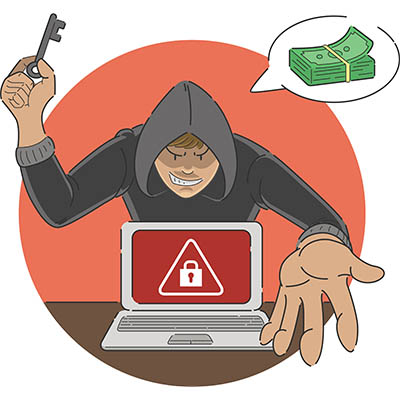Which country is the world-leader when it comes to paying out the largest ransomware payments? A survey by Mimecast, entitled ‘The State of Ransomware Readiness’, reveals that the US victims of ransomware attacks fork out the most, with typical amounts of about six million dollars. This figure probably relates to high-profile incidents, but it’s some indication of what victims might expect to have to pay.
The Cost of Ransomware Attacks
The Mimecast research looked at the experience of 742 cybersecurity professionals. In the preceding two years, a shocking 80% of them had fallen foul of ransomware heists and 39% of the victims paid the ransom. The average ransom was a staggering £5,312,190.
How does that compare with elsewhere in the world? Canadian victims of this variety of cybercrime paid an average $5,347,508. In the United Kingdom it was substantially less, at $850, 000. For South Africa, Germany and Australia the figure was even lower, at $250,00. That may be a fraction of US ransomware attack payments, but it’s still a lot of money to lose.
The figures cited are for those who actually paid up so that they could get their data back. Approximately 40% didn’t pay and some victims managed to negotiate with the hackers and bring the ransom down. The survey also revealed how people fell foul of the cybercriminals holding them to ransom. In most cases, it was via phishing attacks or other online threats. The respondents believed that it was important for them to improve their security to prevent it happening again.
How to Protect Yourself
One of the best ways to protect yourself against ransomware attacks is to have an efficient backup system in operation, as part of your security protections. One of the surprising things revealed by the Mimecast research was that fewer than half of those responding actually had a backup system. In spite of this, 83% of those surveyed claimed that they’d be able to retrieve their data without paying the ransom and 77% thought it would only take two days before they’d sorted out the problem themselves and returned their business to normal functioning.
Of course it will be tempting to spring into action to see what you can do to remedy the situation, but we urge you to think before you do anything. For example, what if your data is actually not encrypted and in the hands of the hackers? Wil your actions, including paying the ransom, make things right? Also, what guarantee is there that you’ll get your data back once you’ve paid? There’s also the problem of giving in to kidnappers. How many other people will suffer because the cybercriminals know that holding data to ransom is an effective way to extort money?
Get Professional Input
The first thing you should do is get your trusted IT resource to establish what’s happened. This should give you a window to figure out what your options are. We never recommend paying the ransom. There are often other avenues. What you have to do is get past the initial panic and look at the situation calmly. If you are unfortunate enough to fall victim to a ransomware attack, there’s plenty you can do afterwards to protect yourself, by implementing powerful security solutions. These might include multi-factor authentication, unified threat management and user permissions.
Make sure you don’t get hit by a ransomware attack. For more information on cybersecurity, and protecting both your data and the future of your business, call Quikteks at (973) 882-4644.

